 IBM released the ThinkPad 380 series back in 1997 as a mid-range laptop to use essentially as a desktop replacement. These were part of the long running 300 series dating back to the early 1990s when IBM released a 386 laptop known as the ThinkPad 300. While initially housing the original Pentium processors, the 380 series had typically used a Pentium MMX or later a Pentium II. From what I can tell, these normally were preloaded with Windows 95, though drivers are available for Windows 3.1, NT, and OS/2 as well.
IBM released the ThinkPad 380 series back in 1997 as a mid-range laptop to use essentially as a desktop replacement. These were part of the long running 300 series dating back to the early 1990s when IBM released a 386 laptop known as the ThinkPad 300. While initially housing the original Pentium processors, the 380 series had typically used a Pentium MMX or later a Pentium II. From what I can tell, these normally were preloaded with Windows 95, though drivers are available for Windows 3.1, NT, and OS/2 as well.
Provided that the laptop had 64 MB RAM and a 2 GB hard disk as the bare minimum it was possible to get Windows XP running albeit not the most optimum experience. Anything prior to Windows 2000 and these machines are quite snappy.
Some time ago I bought a bundle of these ThinkPads collectively for $20 each on eBay in various condition. Today I’ll be showing 3 models and how they fare against each other using SpeedSys.
The first model is an earlier ThinkPad 380D – the only one out of the three built in Japan. This one came with a Pentium 150 MMX processor, 32 MB RAM, 1 MB NeoMagic MagicGraph 128ZV video card, and a 2 GB IBM hard disk. It also came with only one speaker directly at the front in the middle.
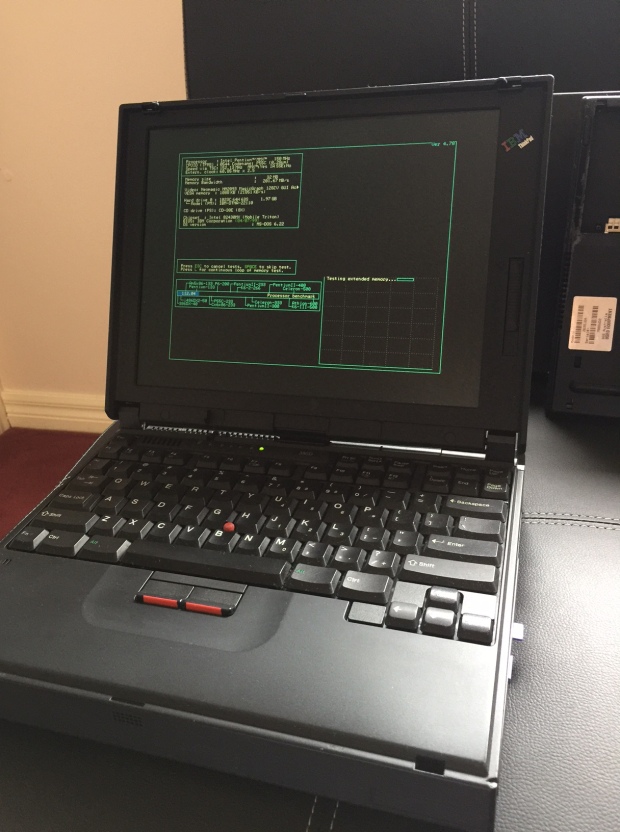
IBM ThinkPad 380D.
Below is how the 380D fared in SpeedSys.
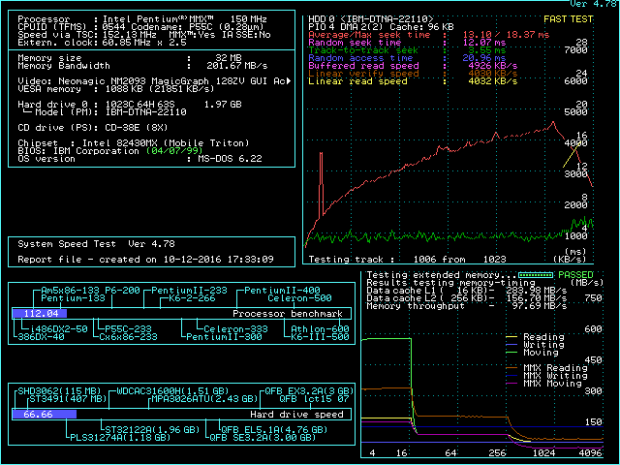
ThinkPad 380D’s results in SpeedSys.
The next model is the 380XD that is a step-up from the 380D, and was built in Mexico. Physically very little is different in appearance and weight to the 380D, though there are some exceptions. The 380XD included one USB port at the rear and dual speakers at the front which the 380D had neither. Other noticeable exceptions is that the 380XD has the volume control and headphone jack beside the power switch with the infra-red port on the other side, while the 380D has these the other way around.
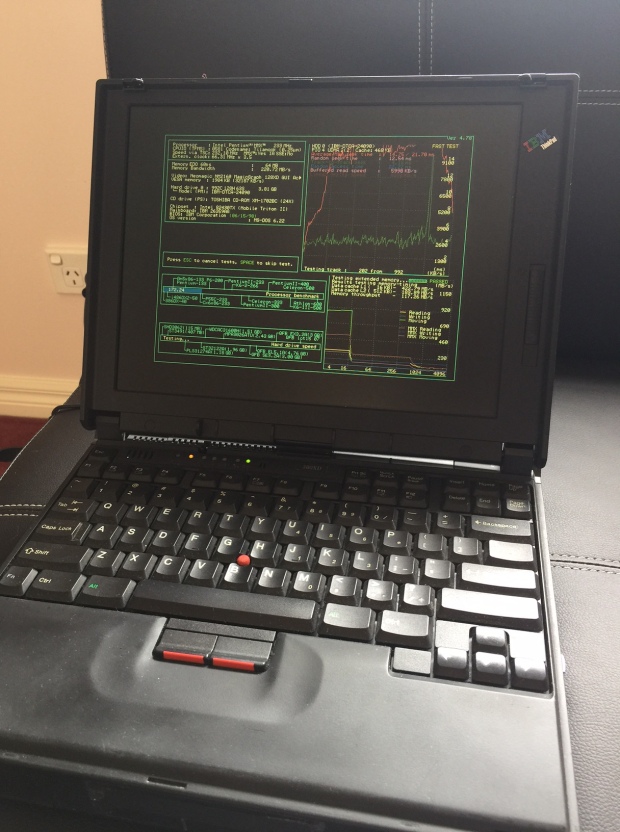
IBM ThinkPad 380XD.
This laptop came with a Pentium 233 MMX processor, 64 MB RAM, 2 MB NeoMagic MagicGraph 128XD video card, 4 GB IBM hard disk, and a noticeably faster Toshiba CD-ROM drive.
Below is how the 380XD fared in SpeedSys.
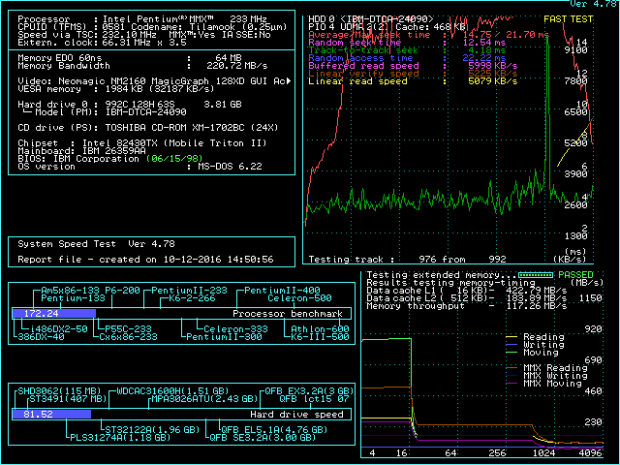
ThinkPad 380XD’s results in SpeedSys.
The final laptop is the 380Z, the last of the models under the 380 series also built in Mexico. With the display closed, you wouldn’t be able to tell the difference from the 380XD. Everything is placed in the same position. The main improvement here is the larger 13.3″ TFT display that allows 1024 x 768 resolution. Both the 380D and 380XD only allow up to 800 x 600.
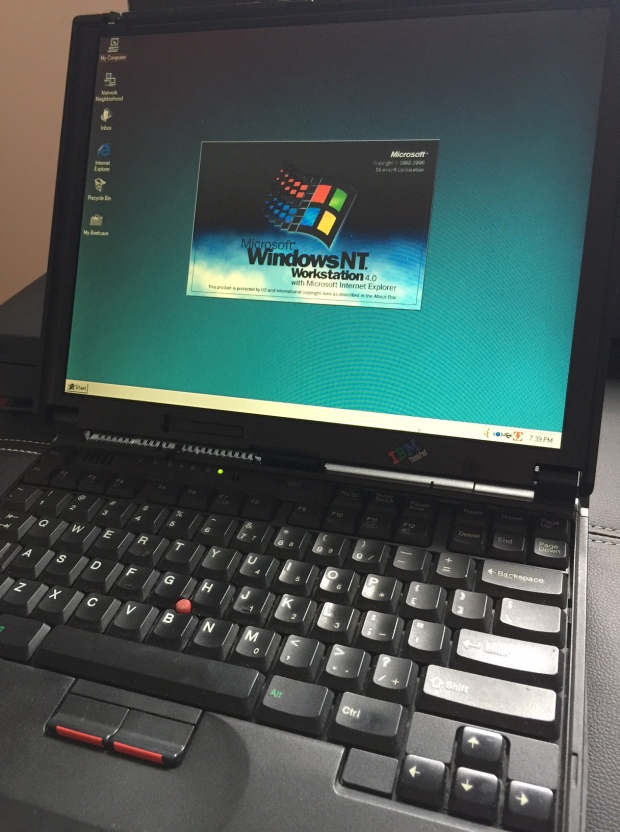
IBM ThinkPad 380Z.
It’s also by far the quickest – to be expected. Pentium II 300 processor, 96 MB RAM, 2.5 MB NeoMagic MagicGraph 256AV video card, and a 7 GB IBM hard disk. Other 380Zs were manufactured with only a Pentium II 233, 32 MB RAM, and with a 4 GB hard disk so the benchmark results would have been in-between this and the 380XD shown. I always thought having 2.5 MB for video was a bit odd for memory size with this model, though this would have been to allow the display to run at the higher resolution without falling back to 256-colour bit depth.
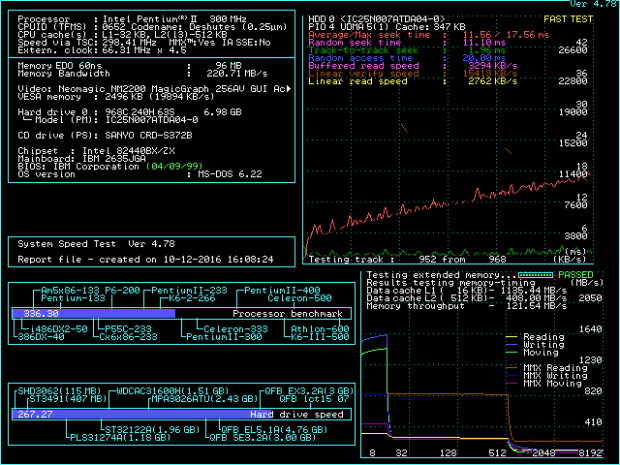
ThinkPad 380Z’s results in SpeedSys.
Although the 380Z was the last model, the 300 series continued for a little longer with some models comprising of earlier Pentium III 450 and 500 processors. By this stage IBM replaced these with the R series targeting the price-conscious buyer. These subsequently became replaced with R series laptops from Lenovo by 2005.